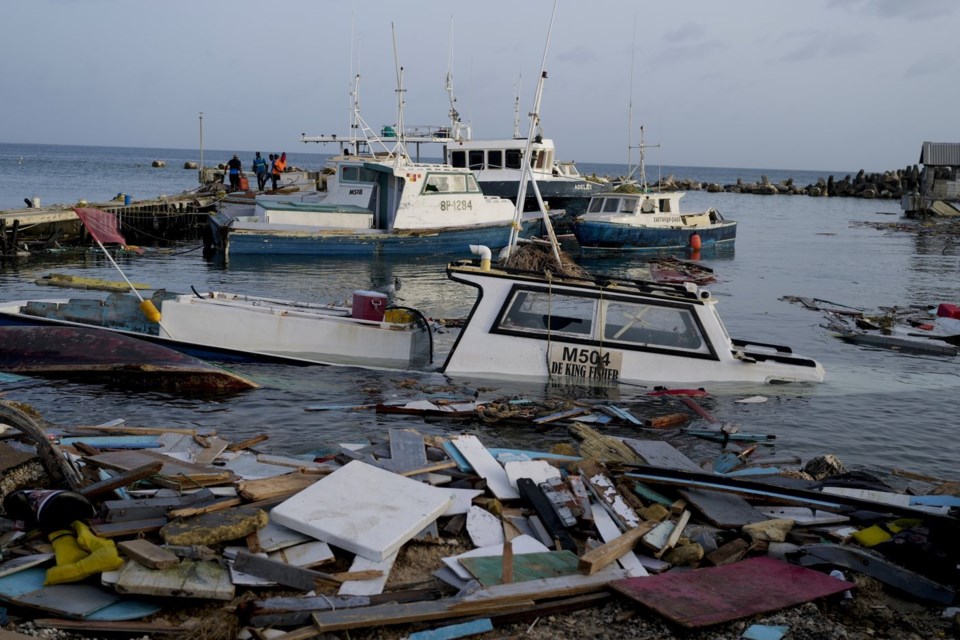The 2024 Atlantic hurricane season comes to a close Saturday, bringing to an end a season that saw 11 hurricanes compared to the average seven, and death and destruction hundreds of miles from where storms came ashore on the U.S. Gulf Coast.
Meteorologists called it a “ crazy busy ” season, due in part to unusually warm ocean temperatures. Eight hurricanes made landfall, in the U.S., Bermuda, Cuba, the Dominican Republic and Grenada.
Here is some of what made the 2024 season stand out:
Hurricane Beryl became the first Category 4 hurricane on record to form in the month of June, slamming into in Grenada. In Jamaica it went on to destroy crops and houses and left two dead. The last time the island was scraped by a Category 4 hurricane was Dean in 2007, making it “pretty rare,” said Brian McNoldy, a hurricane researcher at the University of Miami. The storm then intensified into the earliest Category 5 hurricane ever in the Atlantic on July 1. Major hurricanes — Category 3 and above — are not usually seen until September 1, according to the National Hurricane Center.
In September, Hurricane Helene caused catastrophic damage across the southeastern U.S. and was the deadliest storm to hit the U.S. mainland since Katrina in 2005. More than . North Carolina estimates the storm caused at least in direct or indirect damages with houses, and destroyed. Florida, Georgia, South Carolina, Tennessee and Virginia also sustained extensive damage.
In October, Hurricane Milton rapidly intensified and the storm’s maximum wind speeds hit a screaming 180 mph, making it one of the strongest hurricanes by wind speed ever recorded in the Gulf of Mexico. The only one stronger by that measure was Hurricane Rita in 2005.
The areas where Helene and Milton struck saw as much as three times their usual rainfall for September and October, the heart of the Atlantic hurricane season. For Asheville, Tampa and Orlando, the two-month period was the wettest on record.
In November, Hurricane Rafael reached 120 mph and was nearly the strongest November hurricane on record in the Gulf of Mexico, tying with Hurricane Kate in 1985. Rafael made landfall in and battered the island as it was trying to caused by Hurricane Oscar in October.
Hurricane season and climate change
Planet-warming gases like and released by transportation and industry are causing oceans to rapidly warm. Several factors contribute to the formation of hurricanes, but unusually warm oceans allow hurricanes to form and intensify in places and times we don’t normally anticipate, McNoldy said.
“In other words, we never had a storm as strong as Beryl so early in the season anywhere in the Atlantic and we never had a storm as strong as Milton so late in the season in the Gulf of Mexico,” he said.
“I don’t ever point to climate change as causing a specific weather event, but it certainly has its finger on the scale and makes these extreme storms more likely to occur,” said McNoldy.
____
The Associated Press’ climate and environmental coverage receives financial support from multiple private foundations. AP is solely responsible for all content. Find AP’s for working with philanthropies, a list of supporters and funded coverage areas at .
Isabella O'malley And Mary Katherine Wildeman, The Associated Press




